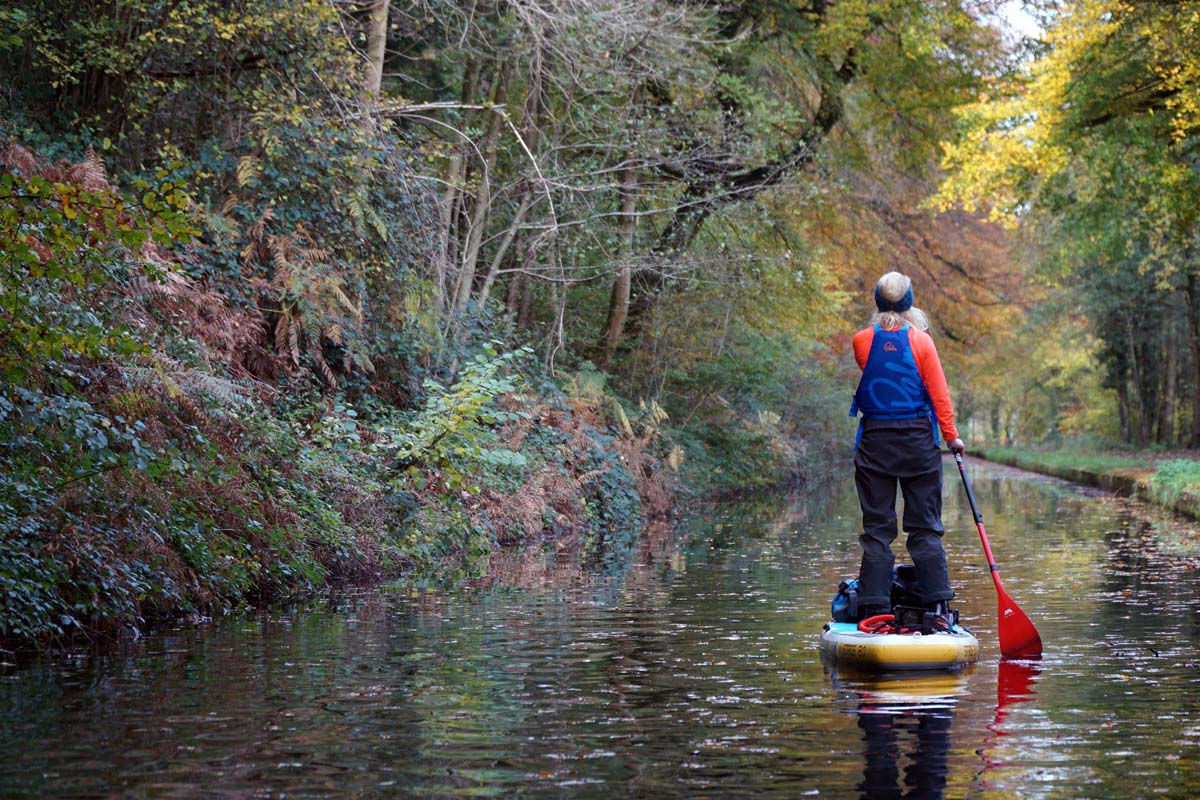
In the past, if you were planning on doing any kind of watersport during the winter months you wore a wetsuit. Yes, you had a bit of choice and a wetsuit kept you warmer than if you were wearing shorts and a t-shirt! But that was it - there was no other option. But today when it comes to watersports, there are so many other clothing options, many of which are far better suited to SUP.
SUP is an unusual watersport because chances are you’ll be spending more time on the water rather than in it (with the exception of SUP surfing!) And if you do get wet it’s likely to be just an unfortunate quick dunk, a shower from above or annoying wet legs from launching.
So as well as a wetsuit what are the other clothing options for SUPing during the colder months, and when might you choose to wear them? In this feature we’re going to talk about when a traditional wetsuit might be used and also highlight some of the newest paddling gear from Palm Equipment, which we feel is particularly well suited to SUP during the winter months…
Full Length Wetsuits
Wetsuits are designed to get wet, and infact work better when they do. So although not the best choice for many drier SUP disciplines they are still well suited for SUP surfing where getting fully submerged is inevitable! Available in different thicknesses and suit lengths to suit varying water temps there is some choice. And over the years the newer neoprene used has made wetsuits more flexible. However wetsuits particularly thicker suits can still feel quite restrictive when paddling, and get very hot and sweaty if you stay dry! And despite some having windproof chest panels they still aren’t great at keeping out the wind chill, which is inevitable when standing up on a SUP. Waterproof jackets can be worn over the top of wetsuits to help keep the wind out when flat water paddling. But unless you’re planning to spend more time in the water than out, before you wrestle into a full length wetsuit maybe consider the other options!
Pros – Ideal if you’re planning to get wet (lots!)
Cons – Hot & sweaty if you remain dry / quite restrictive / not particularly windproof
When to wear – SUP surfing / White Water SUP / Shorter paddle sessions
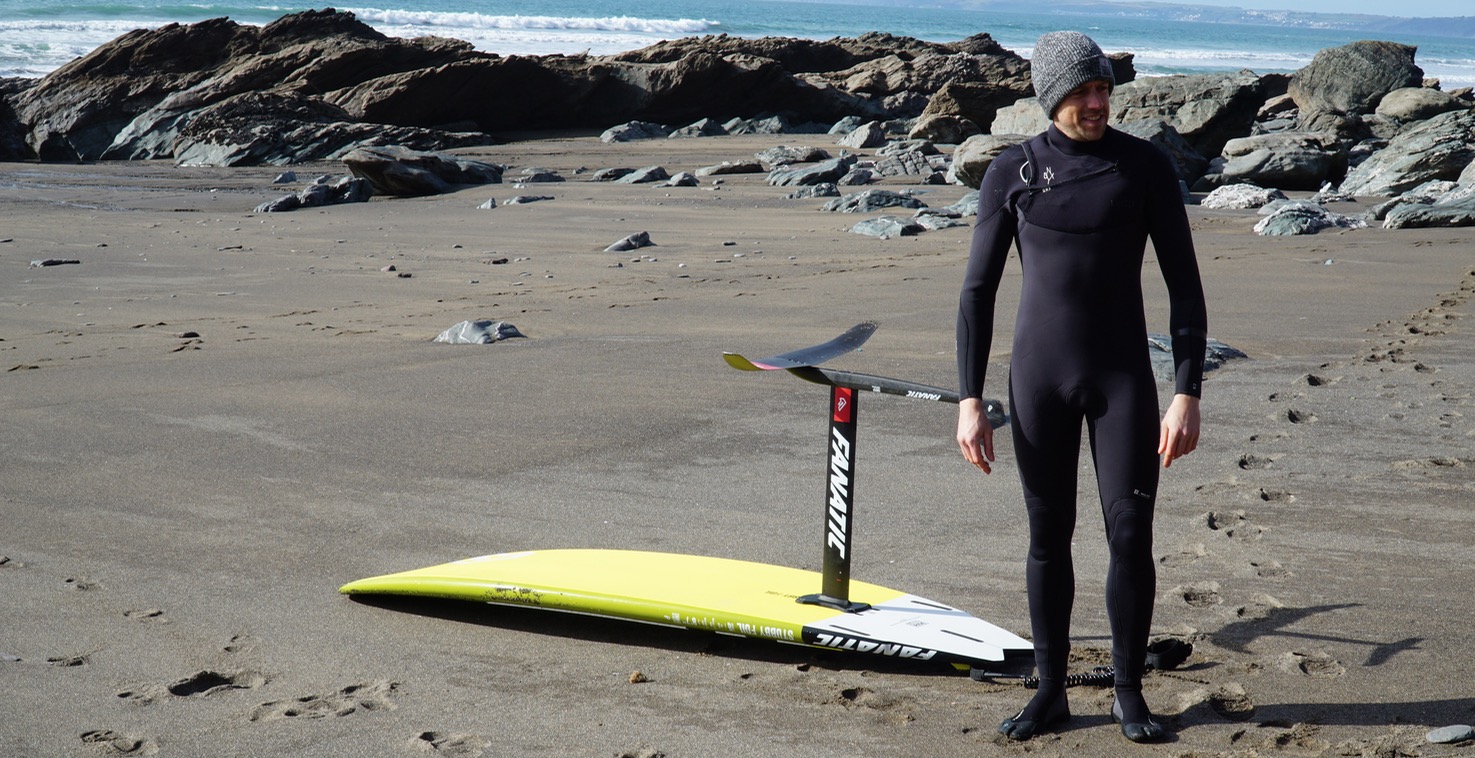
Other Neoprene Options
Long John style wetsuits (without arms), or neoprene leggings are much less restrictive and a good alternative to a full wetsuit for other SUP disciplines. Many have a moisture wicking liner making them extremely comfortable wet or dry. The ability to choose what layers you wear on the top half means your paddling will be less restricted and you can dress accordingly to the weather and type of paddling you’re doing. Ideal for paddling in lots of conditions but not as warm as a full wetsuit if you’re planning to spent lots of time in the water!
Pros – Less restrictive than a full wetsuit / can layer up on top half
Cons – Not as warm as a full wetsuit
When to wear – General paddling / Touring & Exploring / Downwinding / Racing
Drysuits (all-in-one)
Completely opposite to wetsuits, as the name suggests, drysuits are designed to keep you dry. These all in one waterproof suits usually have latex neck and wrist gaskets with built in dry socks, so regardless of whether you get wet from above or below your body will remain totally dry in even the most extreme conditions. Much looser fitting than a wetsuit drysuits are designed with clothes to be worn underneath. What you wear under a dry suit is totally up to you however specialist underlayers are recommended to keep you at the optimum temp. Drysuits are available in different thicknesses making them more/less robust, and with many different features e.g different entry systems, with/without hood, attached dry socks and yes even specialist zips known by Palm as “bomb-doors” to allow you to go to the loo even when fully suited up! Traditional Drysuits are 100% watertight and designed to be worn with all the zips done up. So you either wear a drysuit or you don’t… there’s no half way! More light weight all in one waterproof suits sometimes known as SUP suits with adjustable neck/cuffs are also now appearing on the market – not quite as water tight as a full on drysuit but they still provide good protection from the elements.
Pros – Will keep you 100% dry even in the harshest of conditions
Cons – Difficult to remove layers
When to wear – More extreme weather conditions / Longer SUP adventures / Whitewater SUP
2 Piece Waterproofs
This is the most versatile clothing option. A separate waterproof jacket and trousers allowing you to easily remove layers, as well as mix and match types of clothing.
There are many different types of waterproof jackets and trousers available from Palm. Some jackets have wrist, & neck seals, which when worn with dry trousers with waist seals and waterproof socks act very much like a 2 piece dry suit (Atom & Zenith). Other jackets are designed to be worn as a windproof layer over a wetsuit or clothing (Vector) And other more traditional style waterproof jackets (Vantage & Atlas) are ideal for those unexpected rain showers on exploratory paddles. When combined with waterproof trousers they do a great job at keeping you dry on your board, but remember without neck/wrist/ankle seals they won’t keep you dry if you fall in.
Pros – Very versatile / Easy to take on & off
Cons – Not as waterproof as a full on dry suit
When to wear – Touring & Exploring / Everyday paddling
Layering
Whether you’re wearing an all-in-one drysuit, a 2 piece waterproof, or neoprene leggings with something on the top, it’s well worth thinking about what you wear underneath. Wearing specialist apparel will help prevent you getting hot and sweaty when paddling hard (Arun) and a chill on when you stop. And thin thermal layers (Tsangpo) will ensure you’re kept cozy and able to paddle unrestricted on even the coldest of paddling days. Onesies, leggings, longsleeve tops and gilets are all available. Wearing multiple layers gives you the option to easily add/remove them, allowing you to achieve a comfortable paddling temperature whatever the conditions.
Pros – Help achieve that optimum paddling body temperatutre
Cons – Can be quite expensive
When to wear – Under an all-in-one drysuit or 2 piece waterproofs, or paired with neoprene leggings/long john
Footwear
Having cold feet is the reason most paddlers cut their paddle session short or sometimes stop paddling altogether in winter. But with the right footwear there really is no reason why you should have to stop. There are plenty of options out there to best suit your paddling. But really they fall into 2 categories – dry and warm, or wet and warm feet! To keep your feet dry (the optimum in my opinion!) the options are inbuilt dry socks in drysuits/trousers (Atom) combined with thermal socks (Tsangpo), or seperate waterproof socks within your water shoes (Gradient boots). Otherwise neoprene socks/booties will help keep your feet warmer when wet. If your feet are kept dry they are likely to stay warmer for longer. So for longer SUP adventures ideally you should aim to keep your feet dry. But for SUP surfing, downwinding etc… when mobility on the board is essential, neoprene booties rather than thicker soled water shoes are more appropriate.
Pros – Help prolong your paddle session
Cons – Thick soles can make you feel unstable and more detached from your board / Wet neoprene booties don’t always smell the best!
When to wear – Neoprene booties for SUP surfing, downwinding & shorter sessions / Water shoes combined with dry socks or neo socks for longer SUP Touring & Exploring or White Water SUP
Other Winter Accessories
There are lots of other clothing accessories which can also really help to make paddling during winter more enjoyable.
Keeping your hands warm and protected from the wind are essential. Palmless mitts (Talon) combined with an expensive hand warming carbon paddle(!) do a great job at this, without getting cramp as if often the case with normal gloves. PFDs, as well as helping to keep you safe and acting as an extra clothing layer are also a perfect place to warm your hands inside, and some even have fleecy hand warming pockets! (Peyto) Keeping your head covered with either a neoprene hood (Neoflex or Surf Hood/Pilot or Header Cap), or a beanie hat (Tsangpo) is a must. And a snug/neck scarf is a really handy little accessory too, as well as a dry bag containing some spare clothes/essentials. Having a quality changing robe to make the whole chilly changing experience a bit more pleasant (and giving you the option of driving straight home to jump in the hot shower!) is also well worth the money!
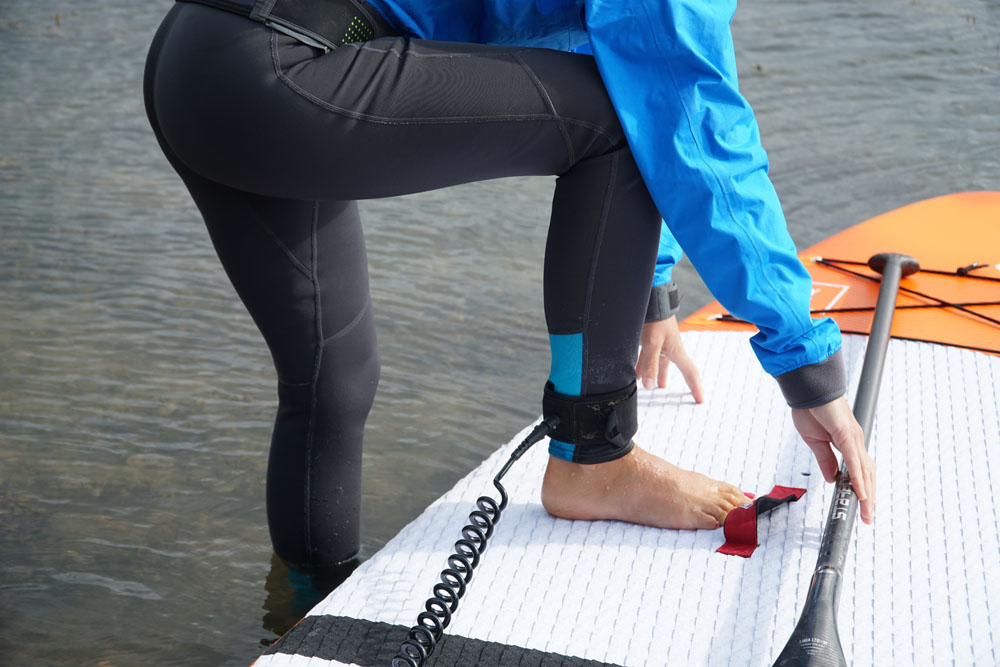
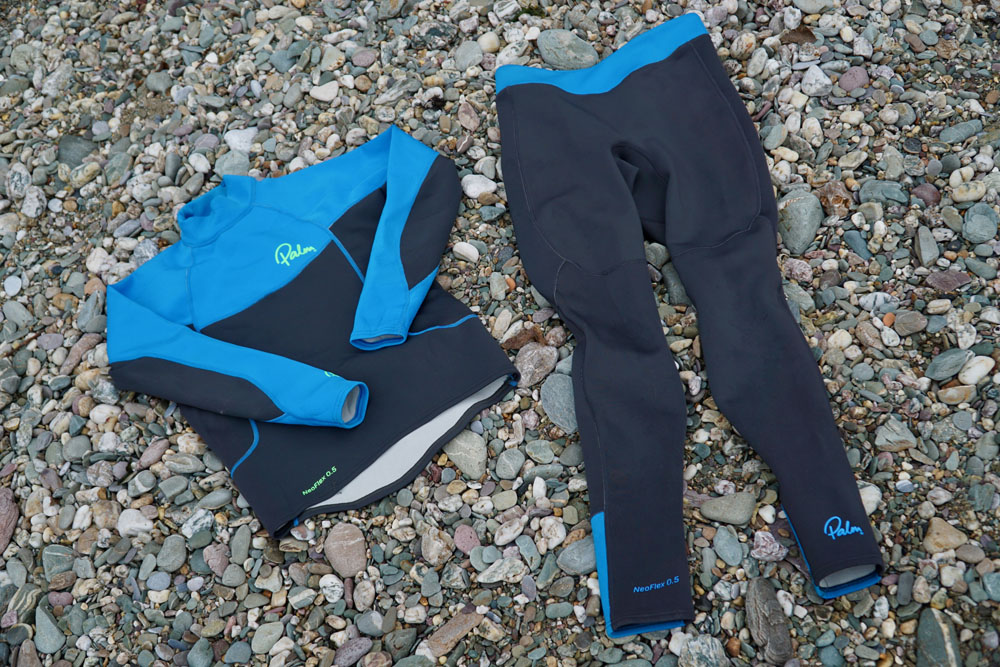
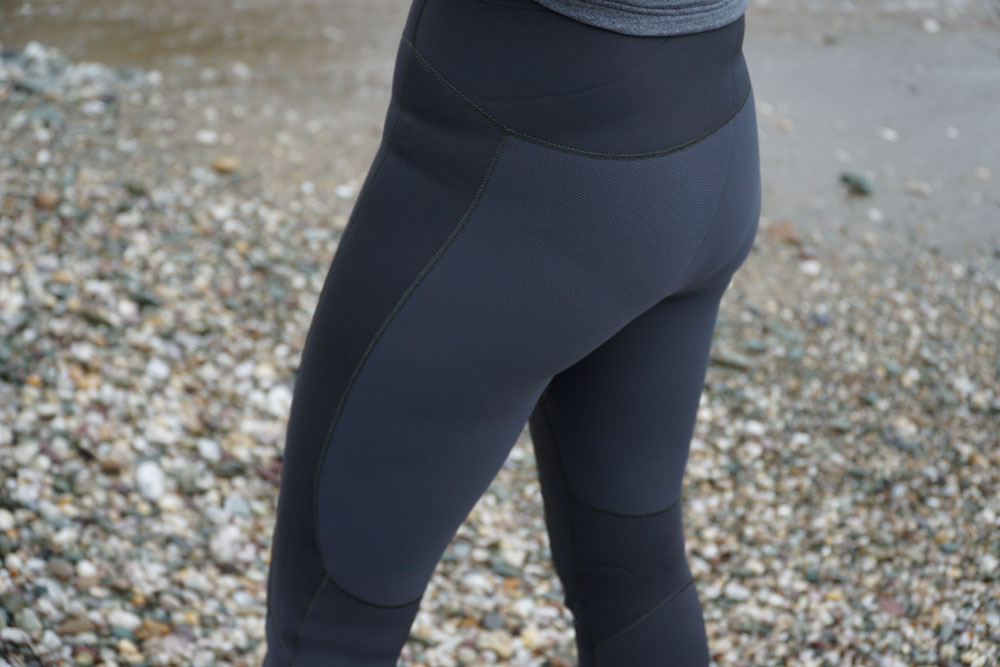
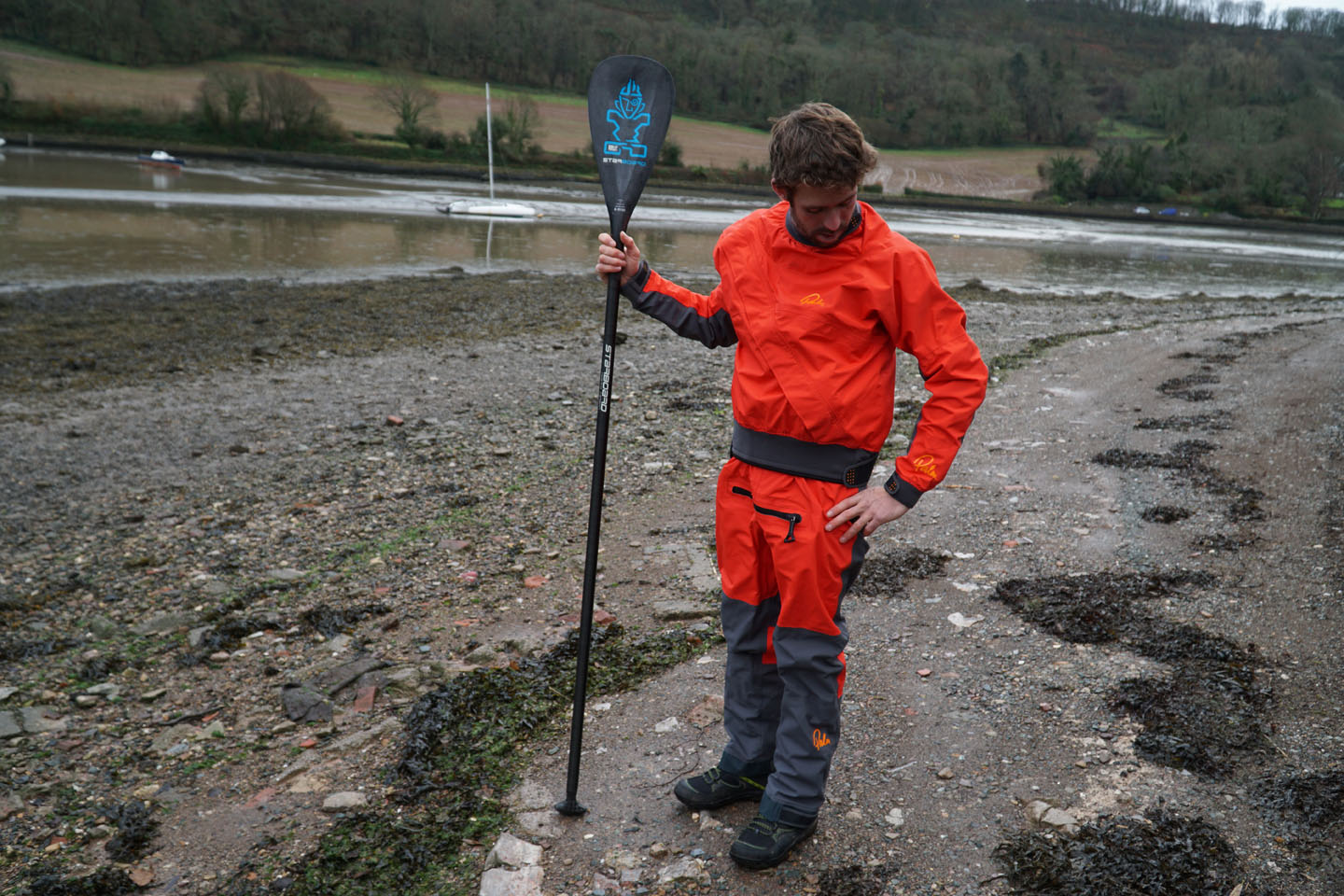
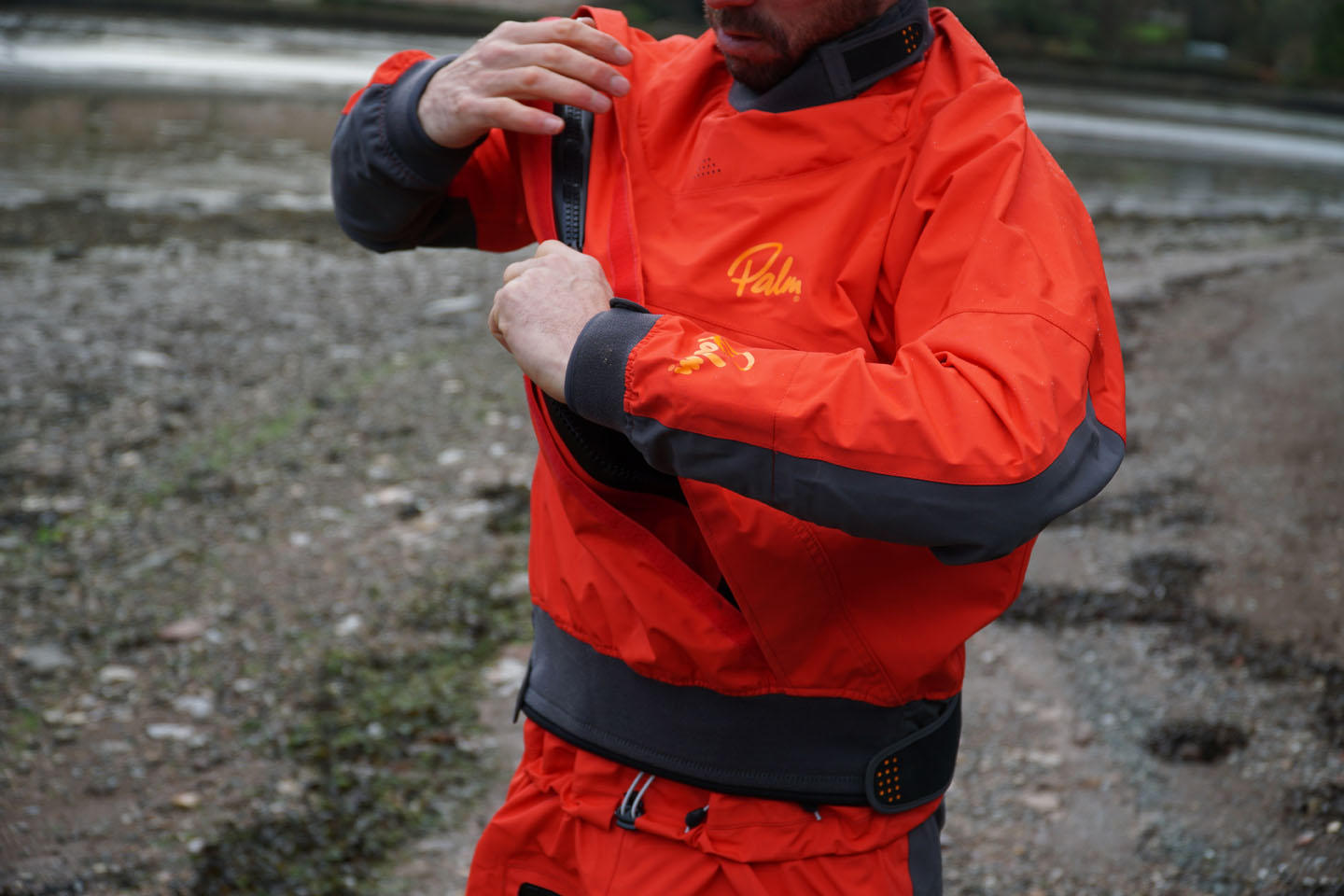
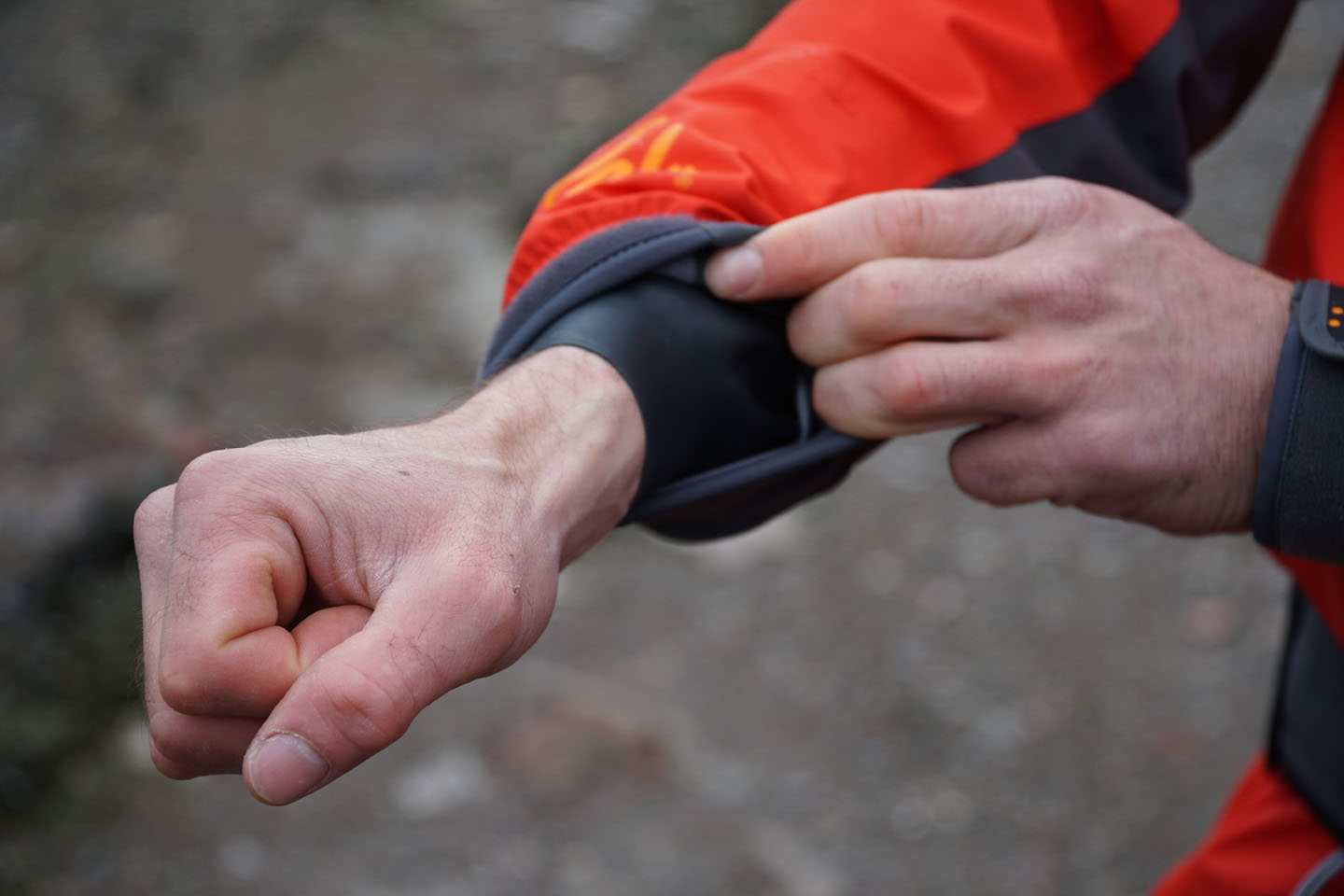
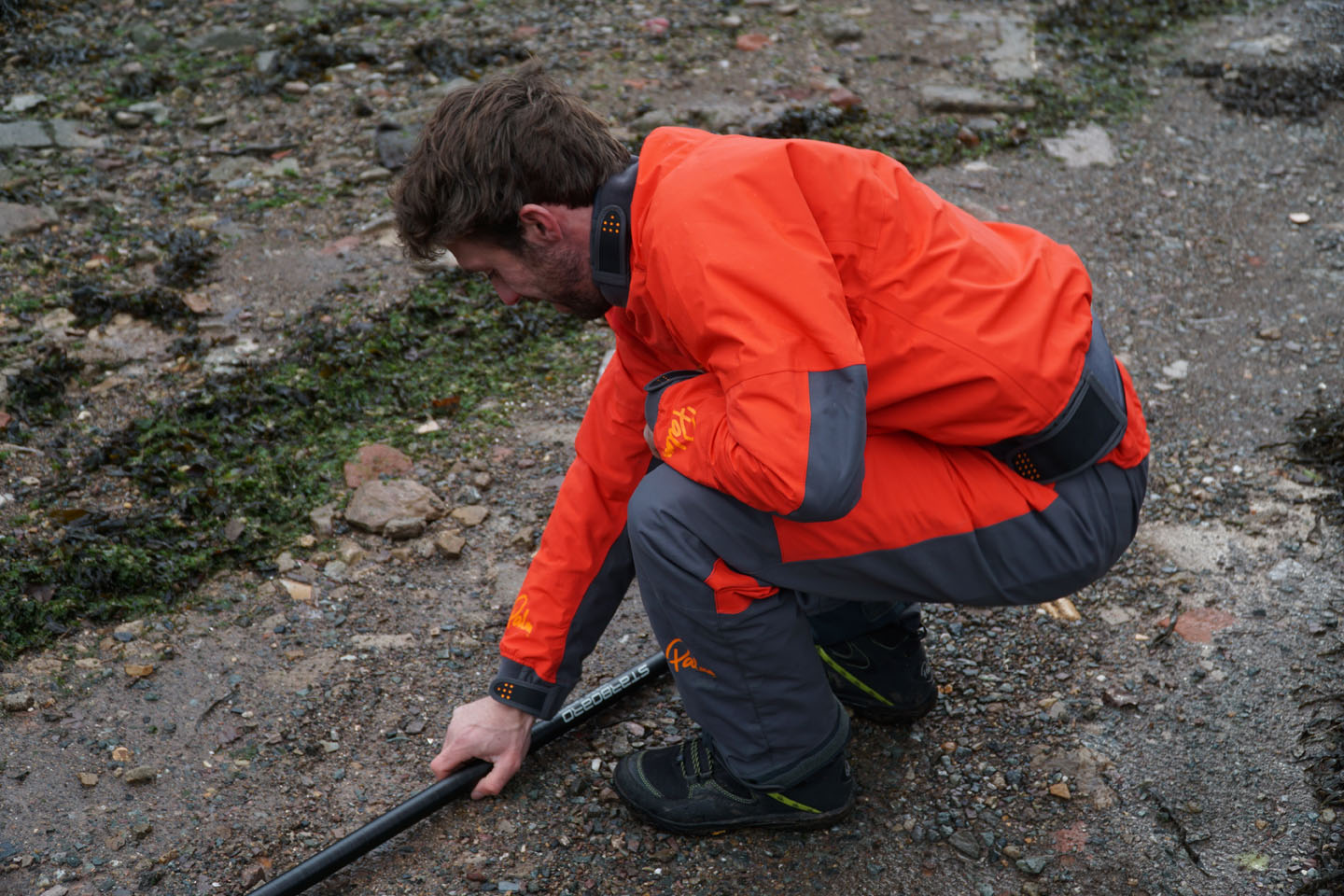
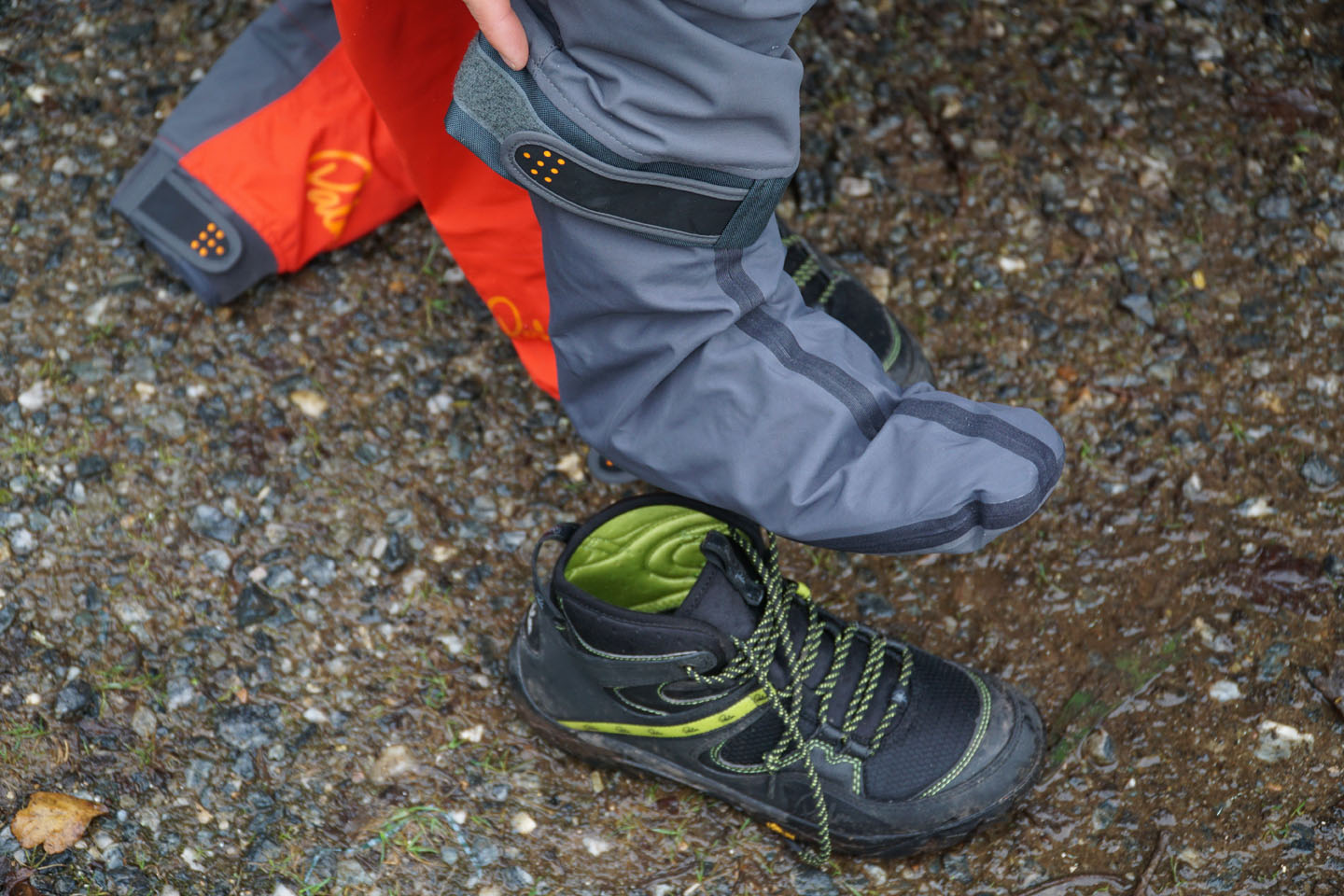
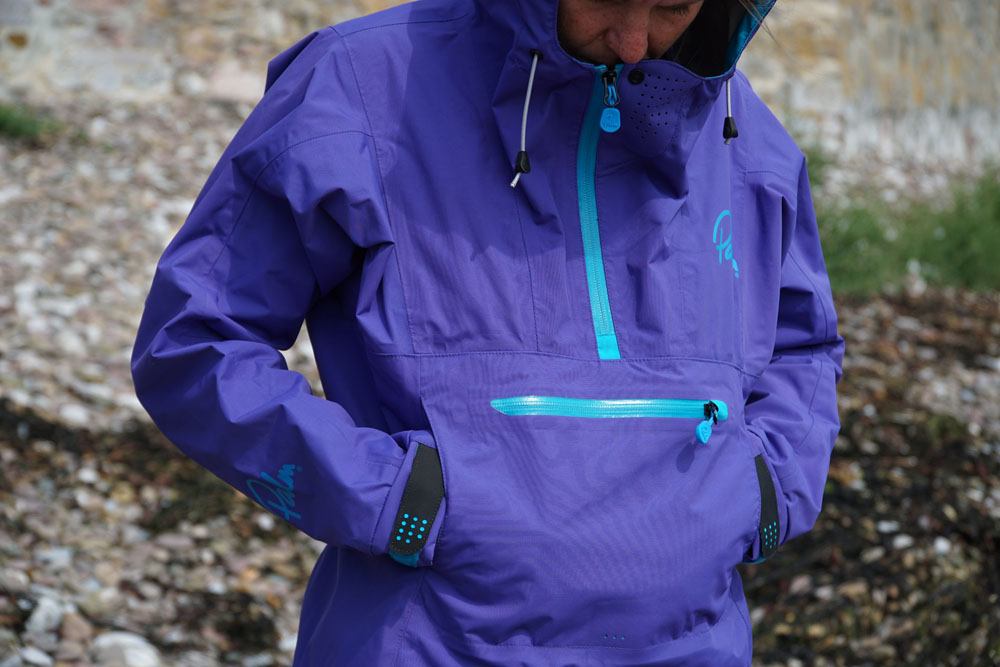
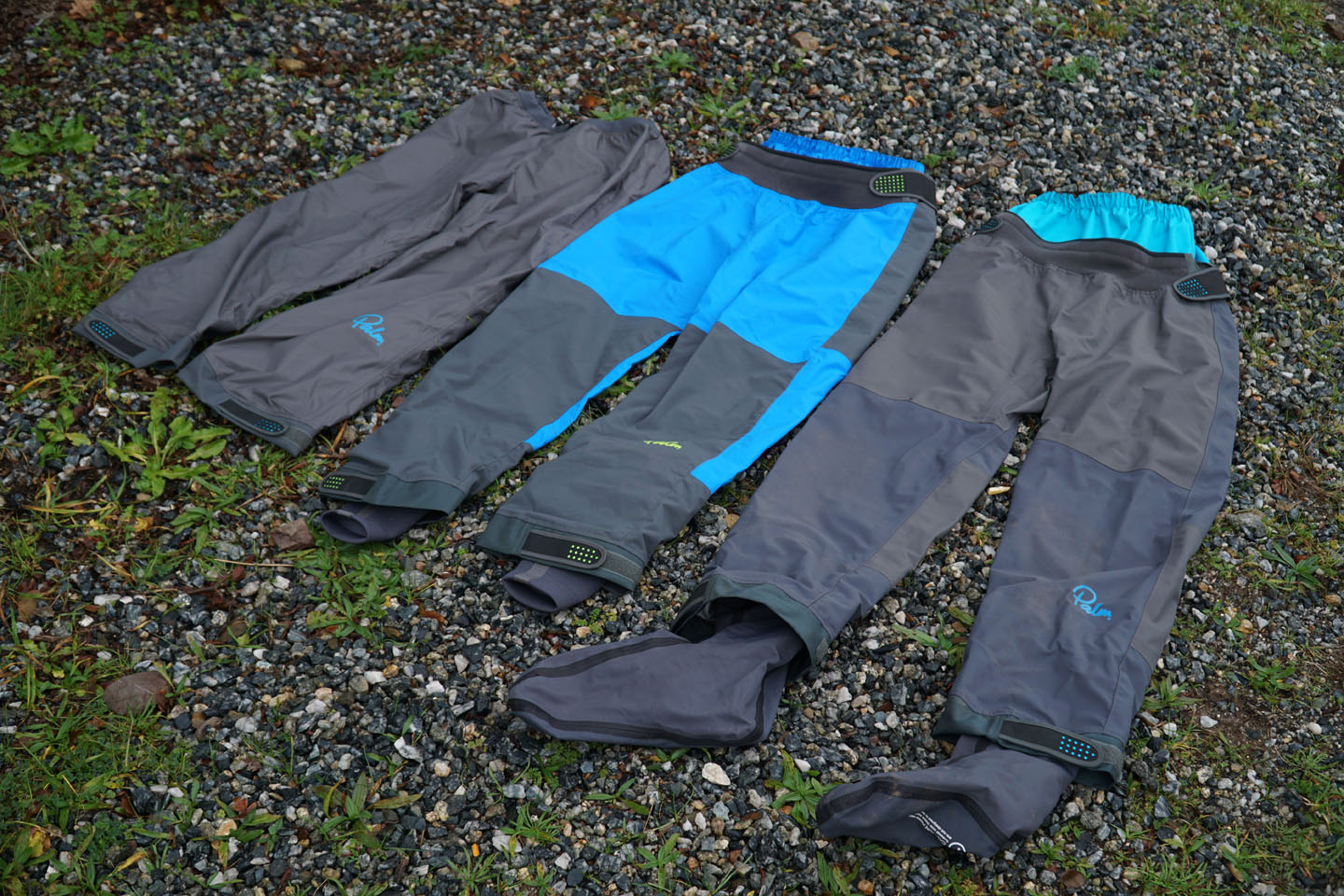
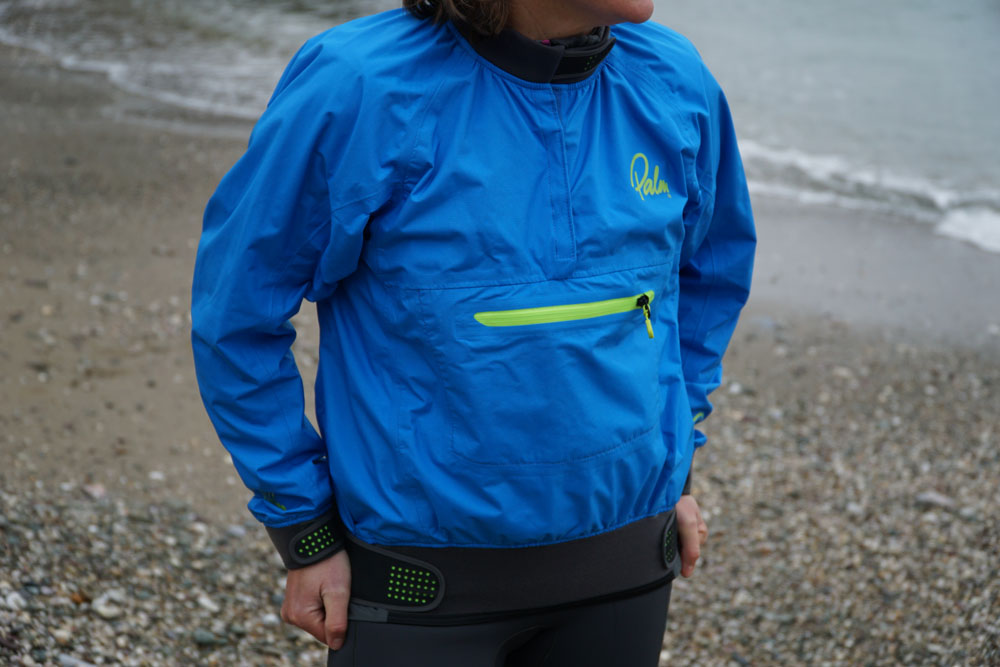
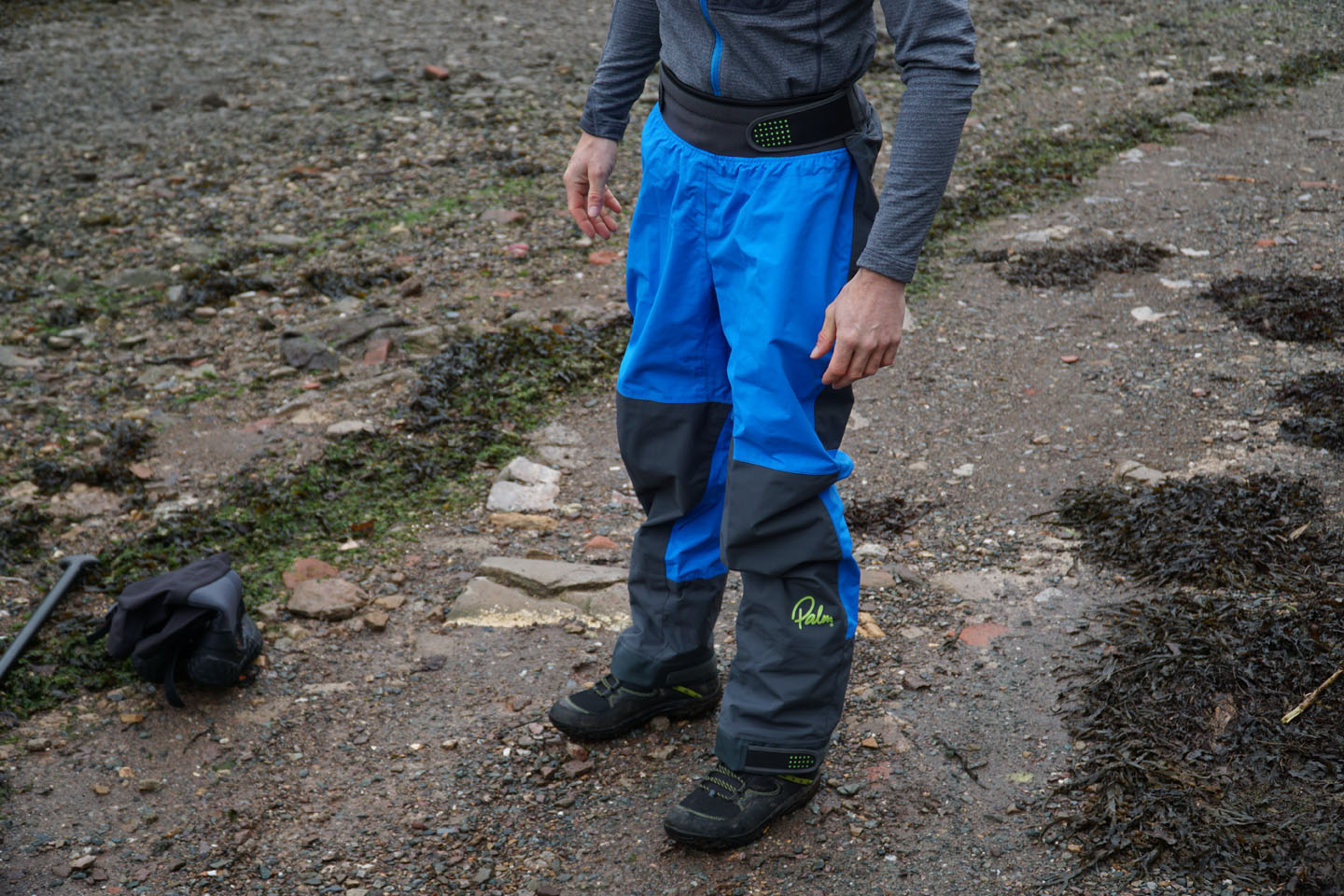
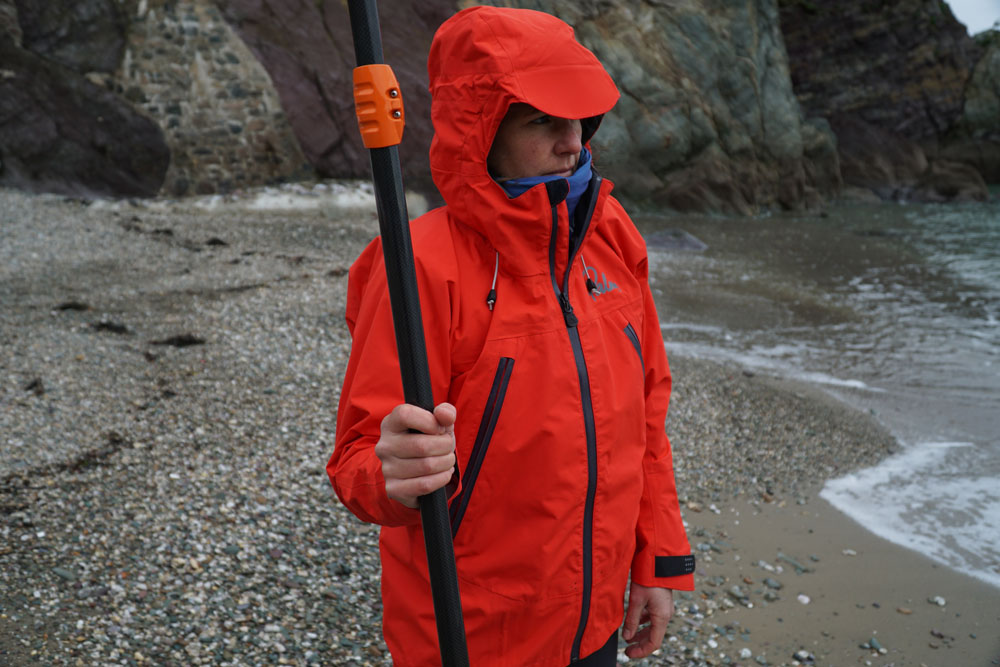
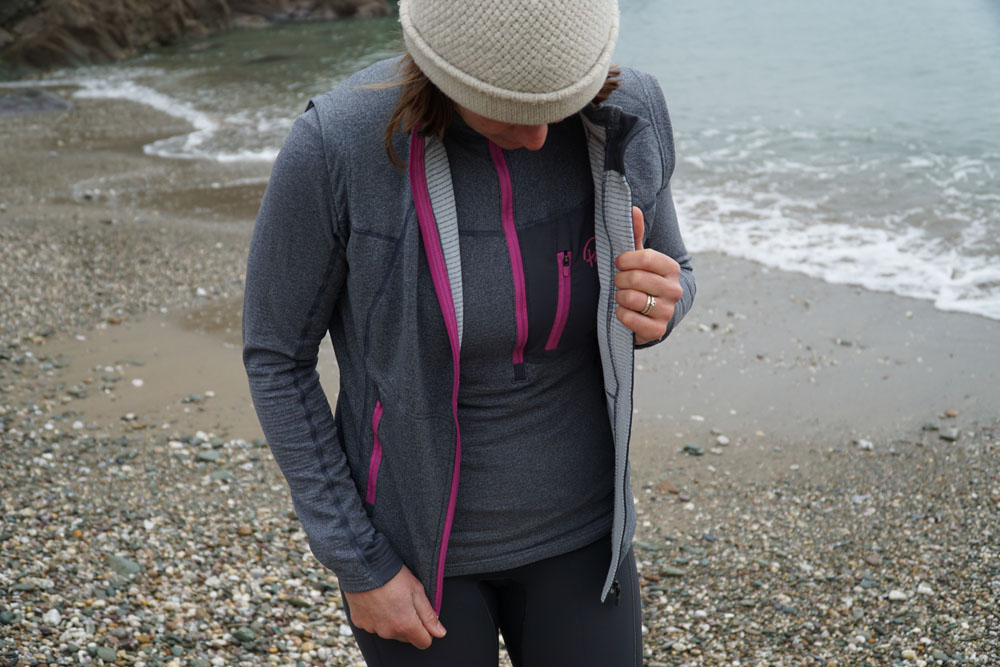
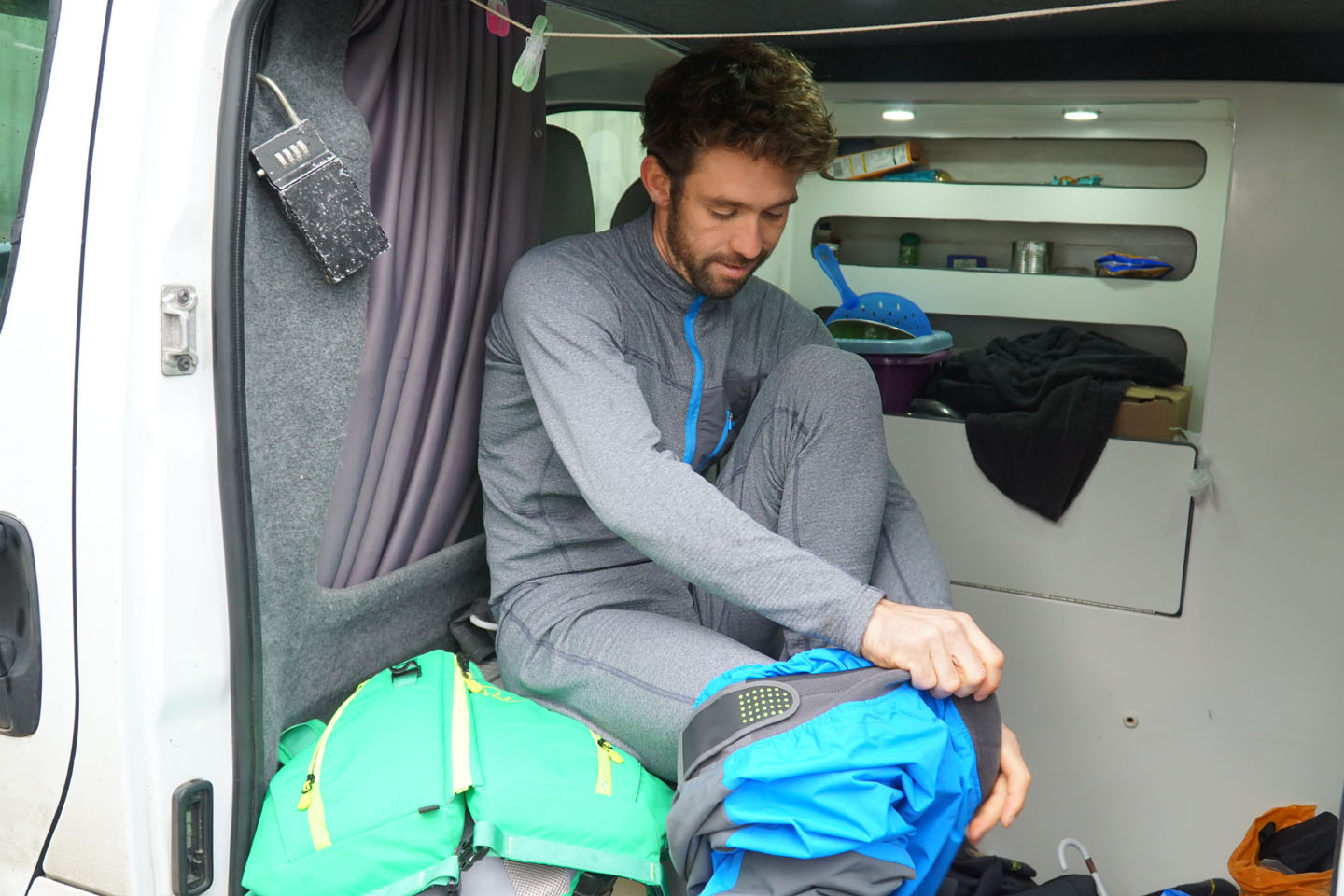
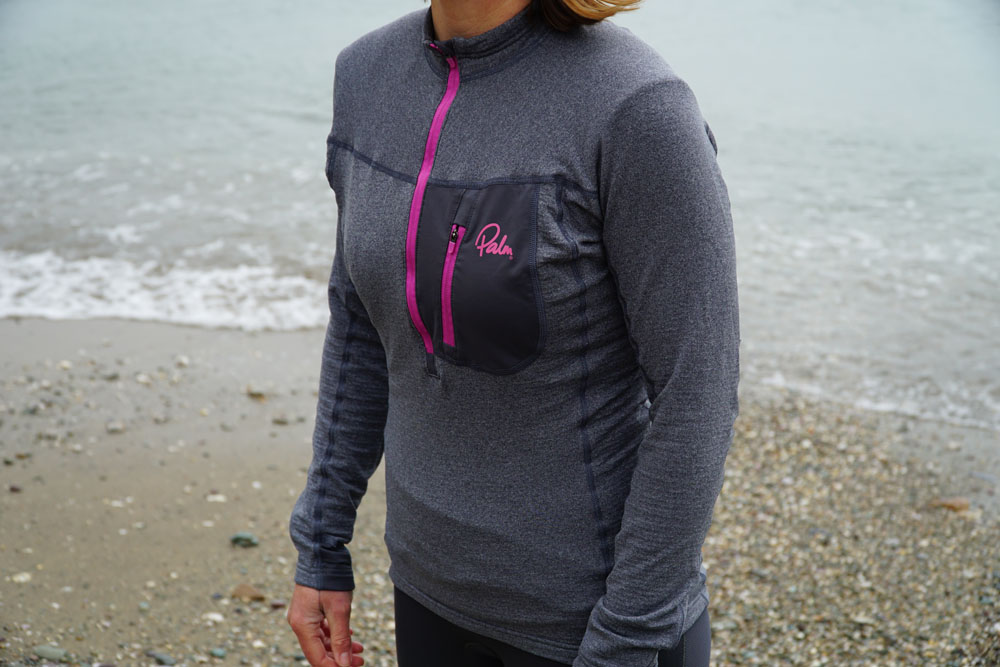
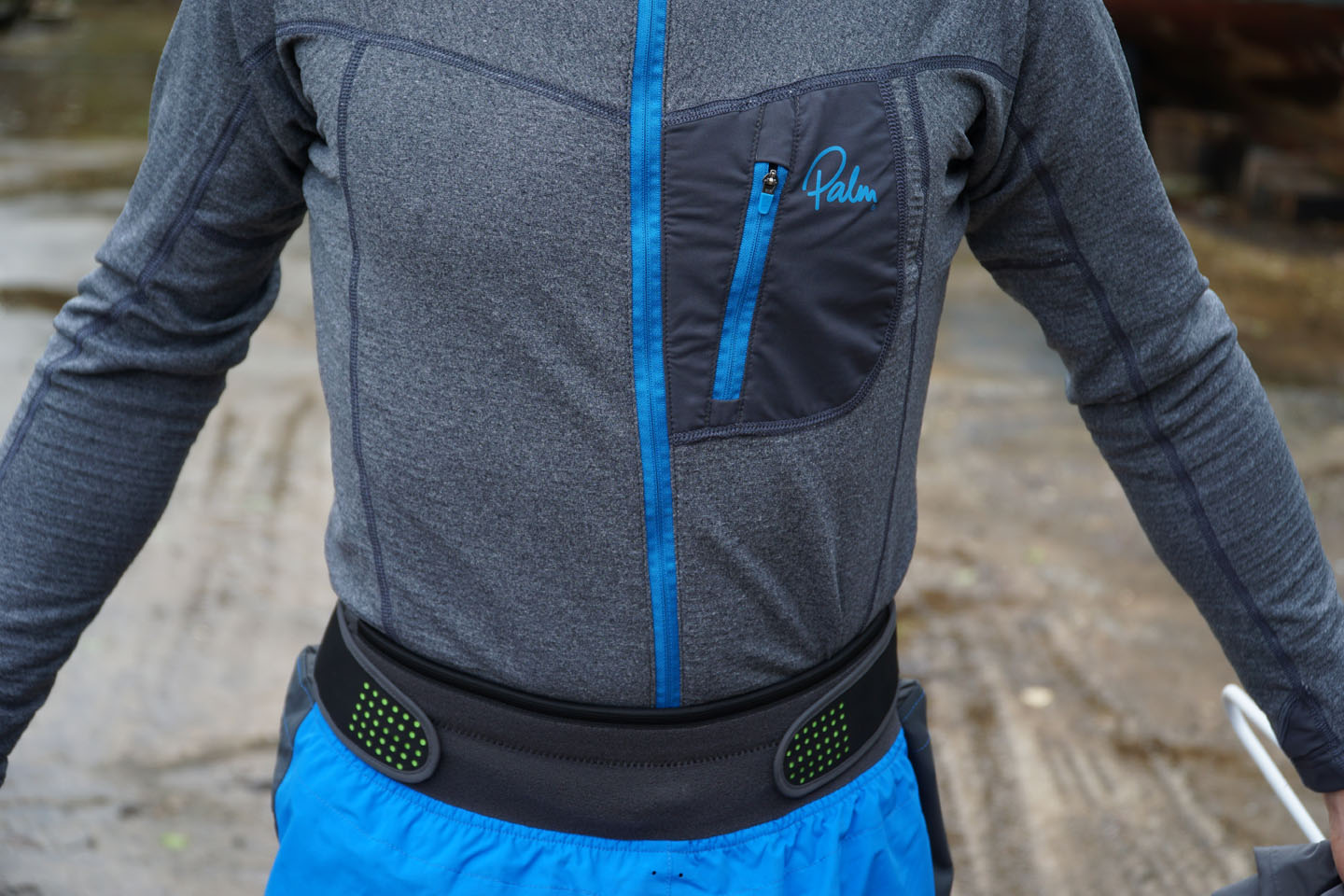

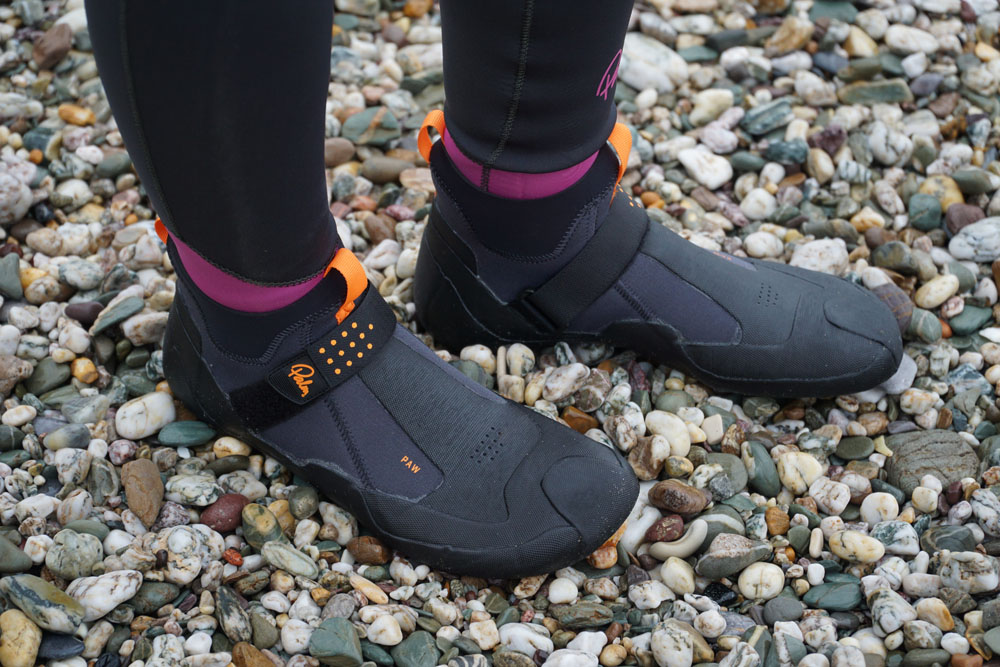
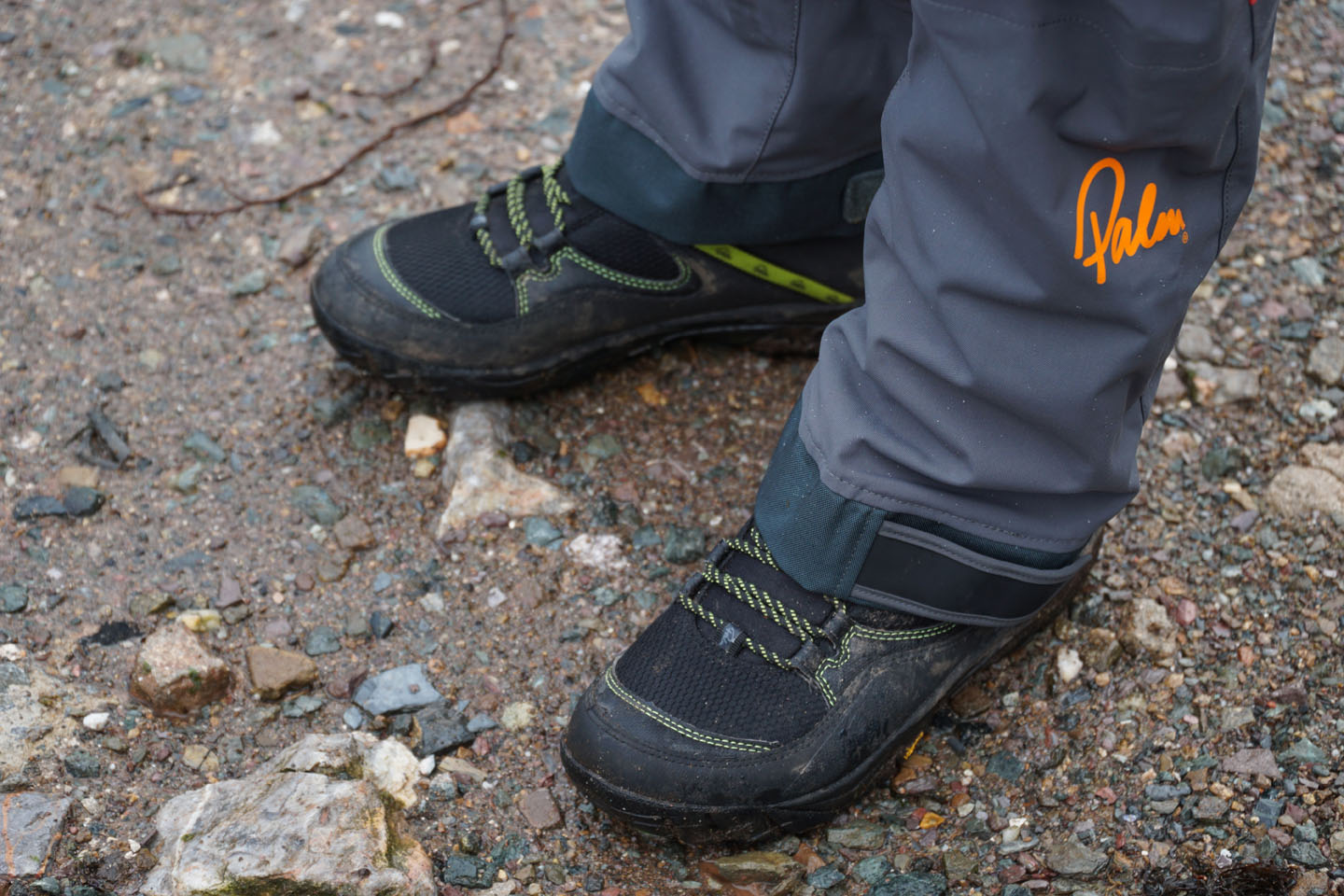

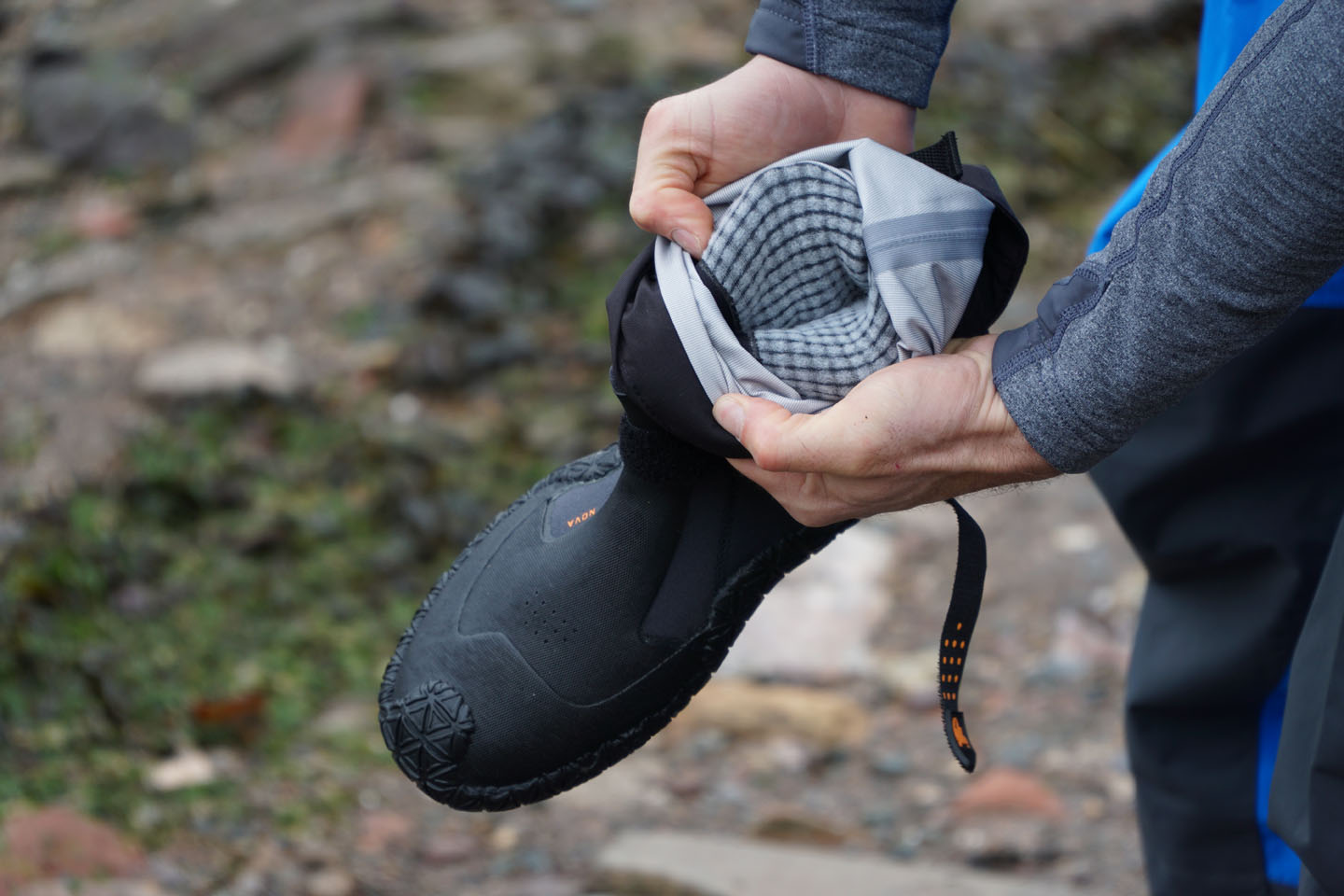
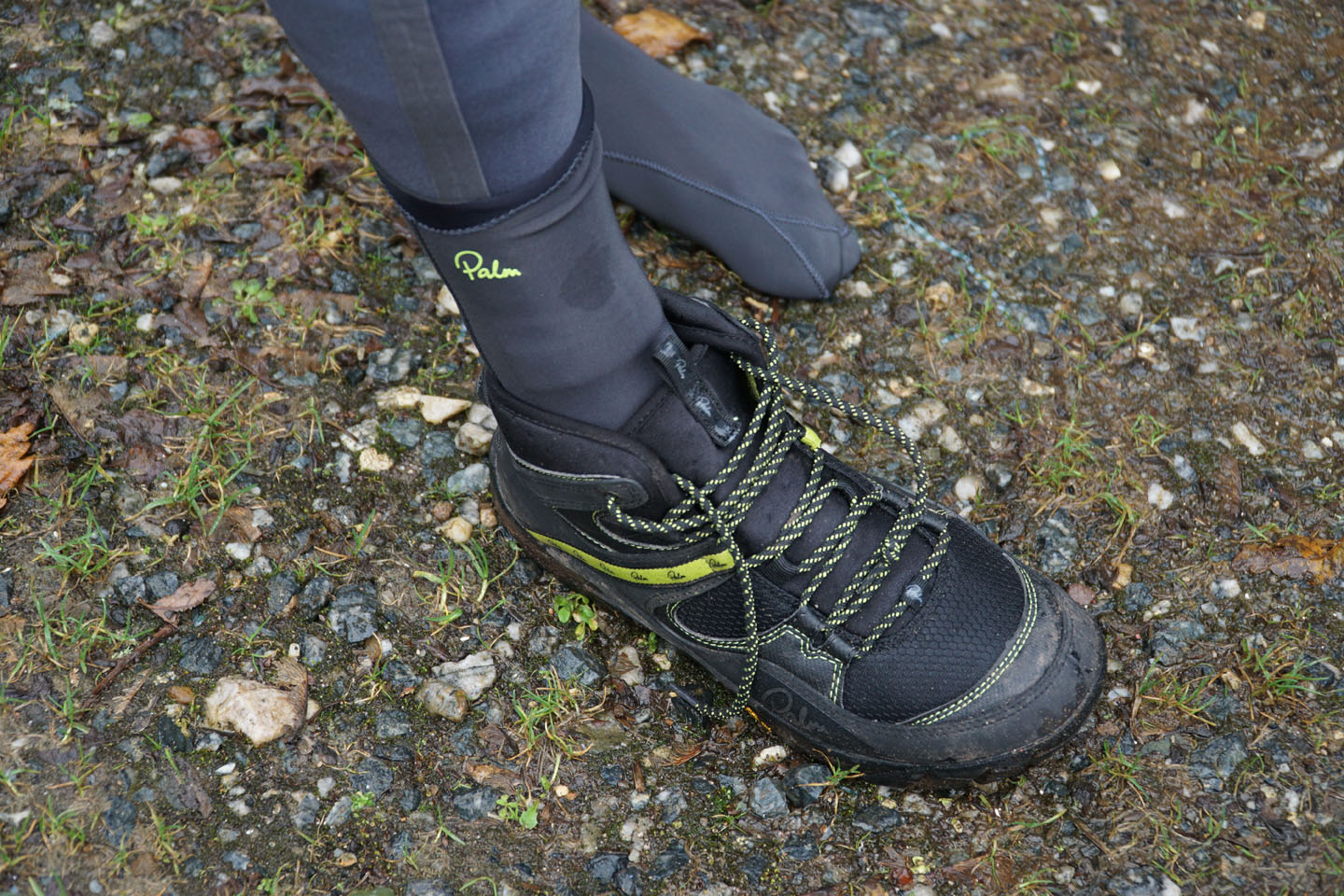
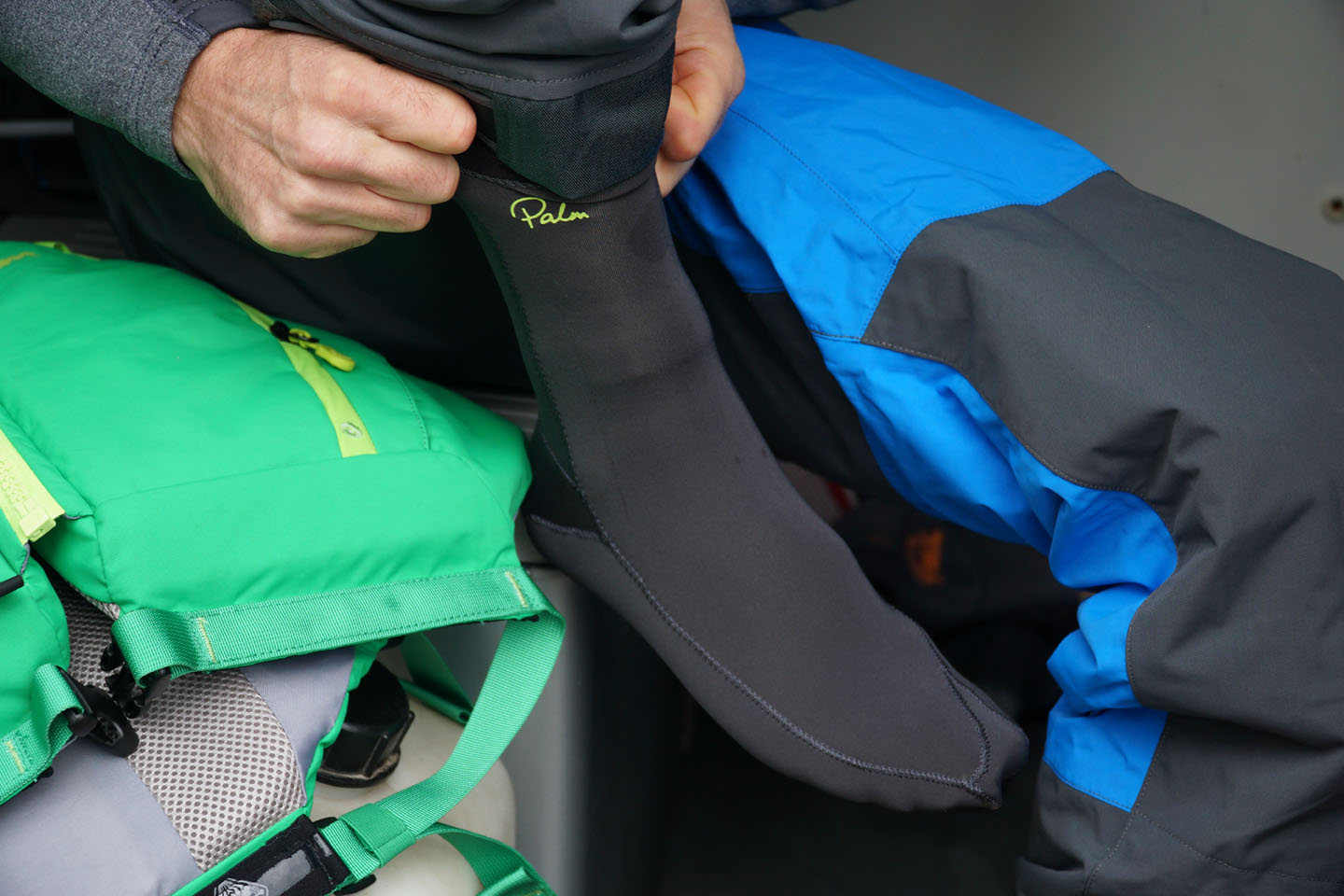
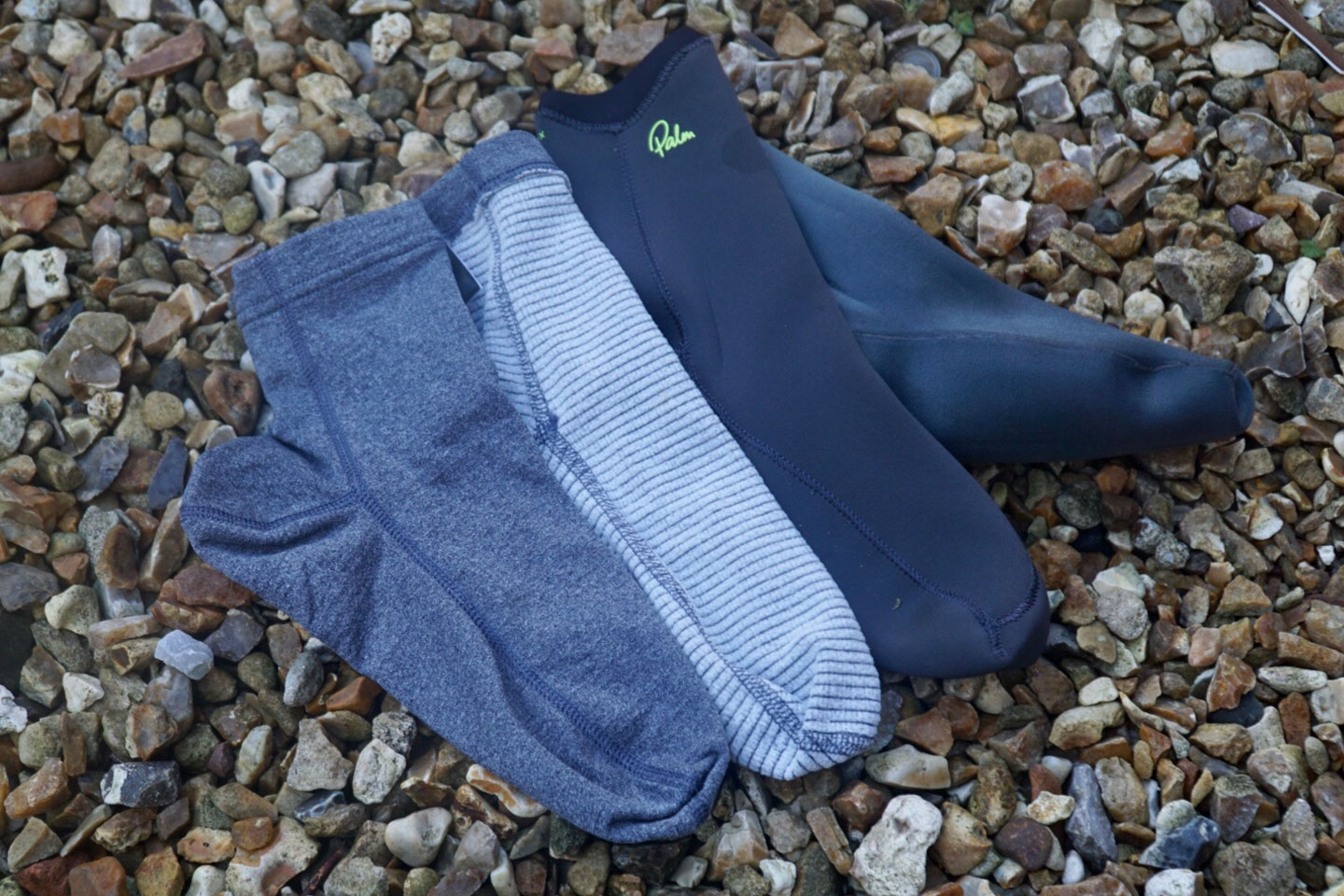
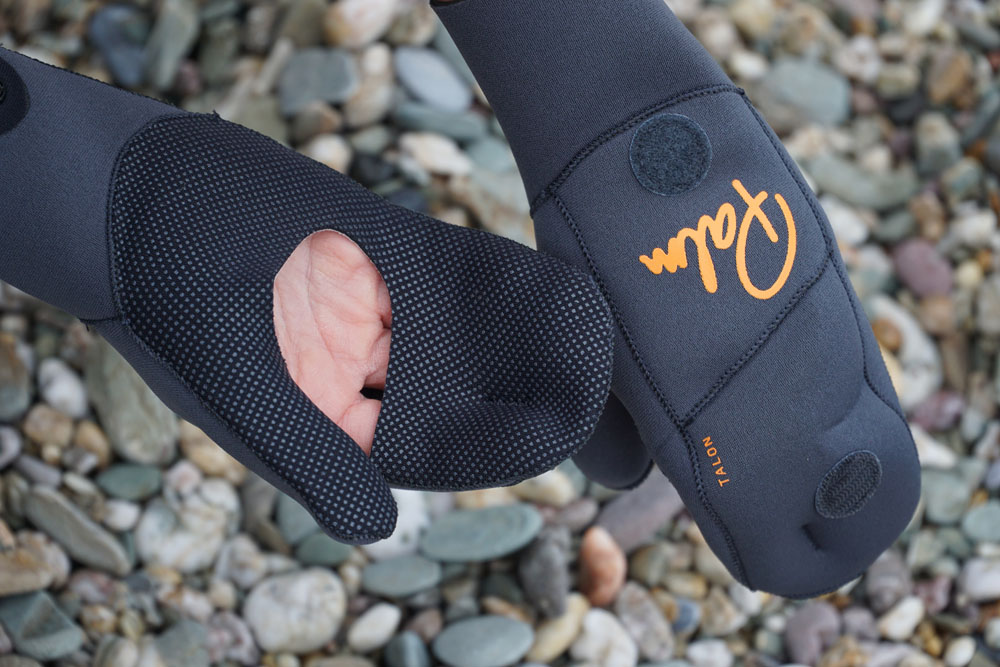
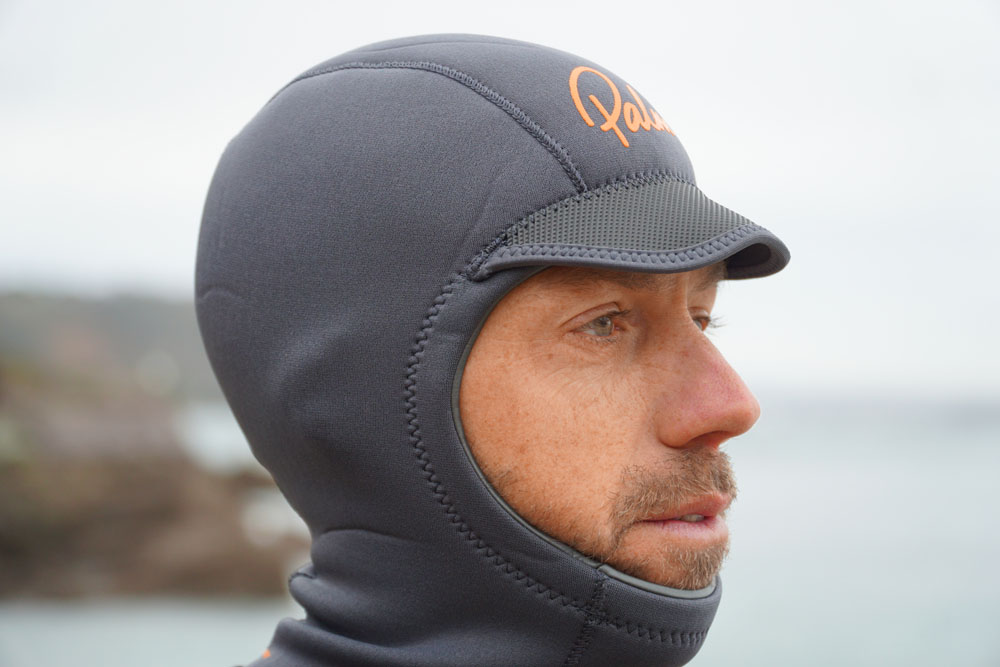

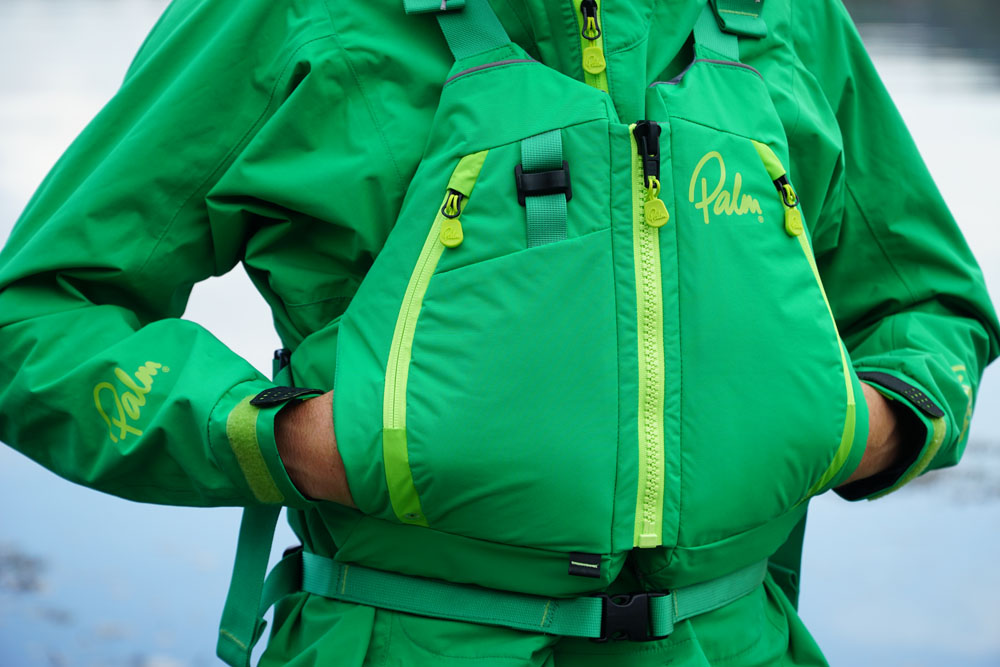
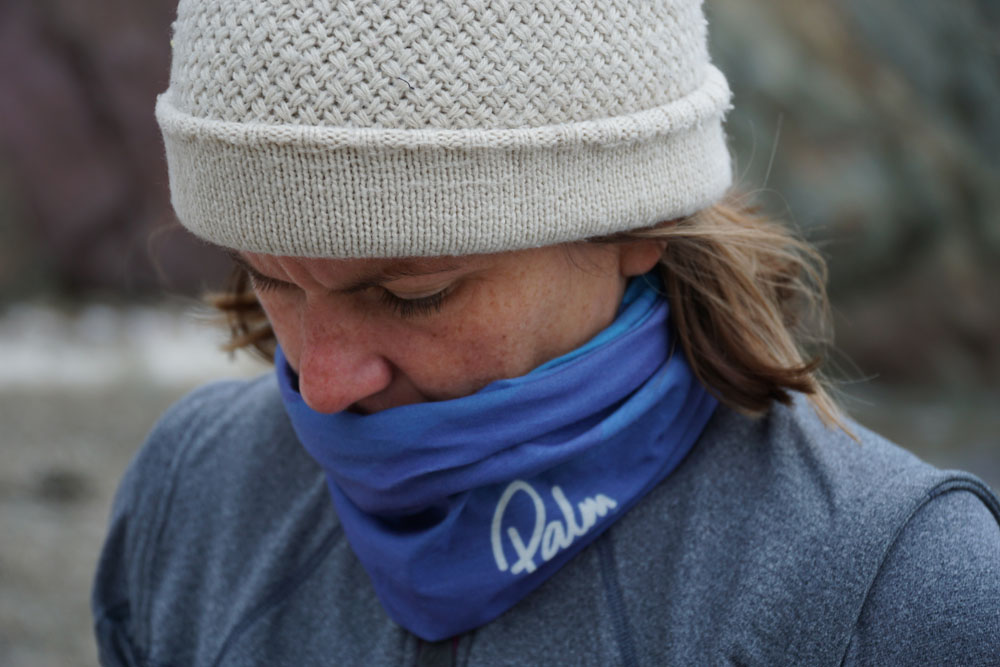

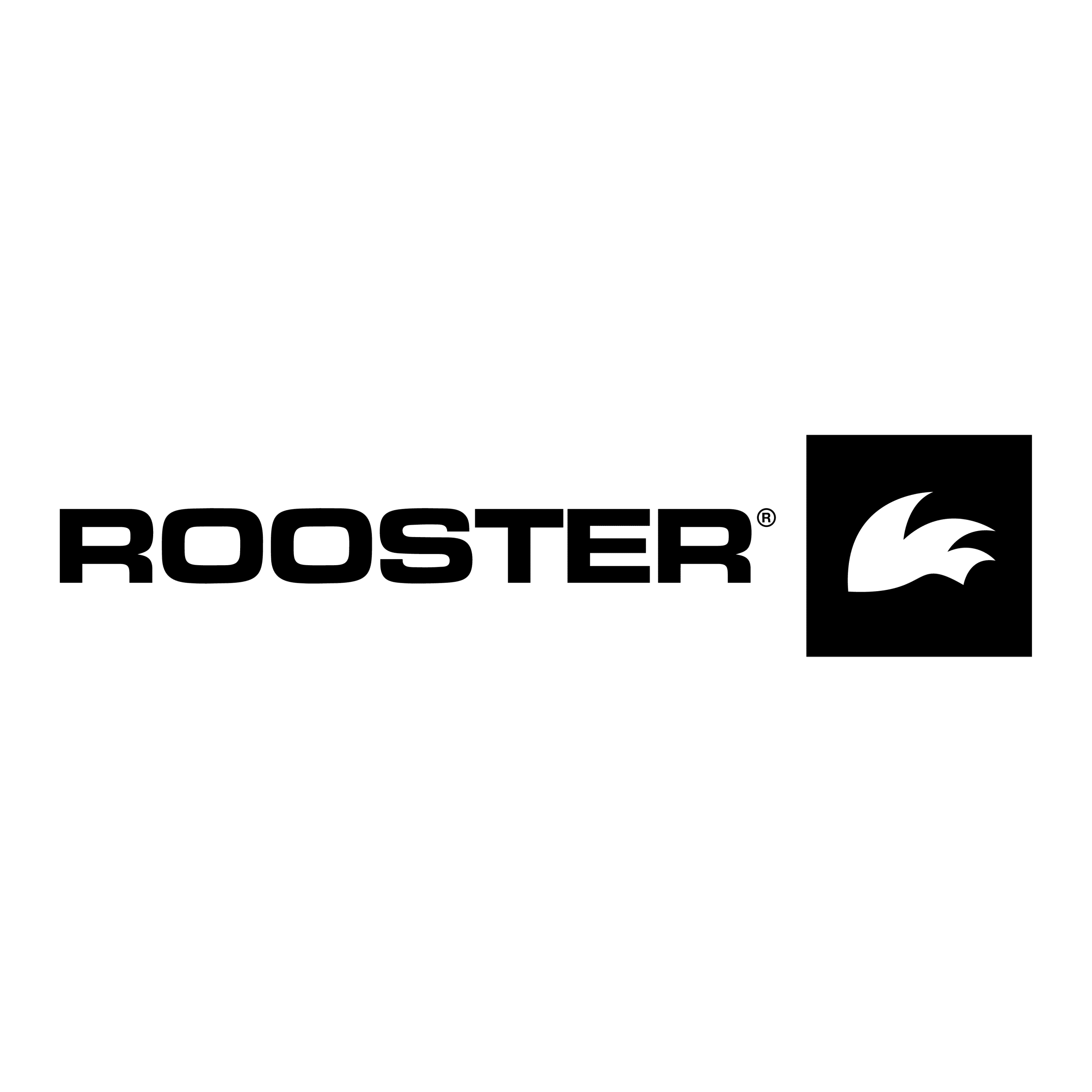

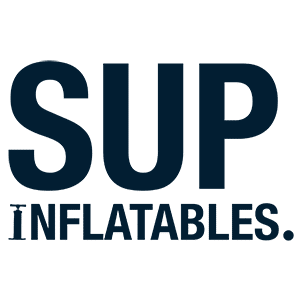
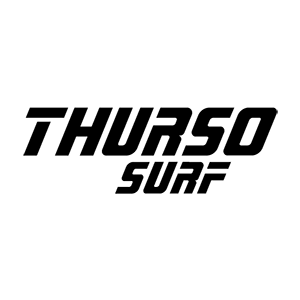





Hello,
underneath drysuits don’t really understand the difference between Tsangpo and Arun.
Need to prevent wet on my skin due to perspiration.
Thank you
Ale
Hi Ale. The Tsangpo is a warmer thermal layer, which would be better to wear under a drysuit when paddling in colder conditions to help keep you warm. The Arun is a much thinner layer specifically designed for wicking moisture away from your skin to help keep you dry, warm and comfortable when working up a sweat… when paddling harder or in warmer climates. Sounds like the Arun range is more what you’re after. You could always layer up on top if it’s not warm enough. Hope that helps? Lucy
Hi Supboarder, I’m a little confused as to what cold weather clothing to wear. I SUP in the sea so expect to fall in at least once during a longer paddle. Reading your article, the aim of the game is to keep dry and wear layers, so it sounds like my best option is a 2 piece dry suit. Would a 2 piece really keep me dry if I fall in? How would water not get in around the waist? Thanks and great videos by the way. Especially the touring and camping. I have just bought boards for my 2… Read more »
Hi Biff. Yes knowing what’s best to wear when SUPing during winter can be tricky, especially as most of the time chances are you’ll be on the water not in it! But it’s important especially during the colder months to always dress appropriately for getting wet. For winter flat water paddling I am a big fan of the Palm Atom Pants, which are basically waterproof trousers with inbuilt waterproof socks. They allow you to keep your feet and legs totally dry when launching and paddling. And the twin waist means when paired up with a twin waisted jacket becomes a… Read more »
Hi Lucy. I have the atom pants and surge cag but I can’t find any information on how I should be wearing them correctly regarding the two twin waists. Can you let me know how best to combine them for maximum protection. I’m clearly wearing them wrong as the waist let’s in water when submerged.
Hi Paul. I’m surprised to hear you’re getting wet with that combo. The waist layering should be as follows… inner high elasticated trouser waist again your skin/inner clothing layer, inner elasticated jacket waist over the top, outer velcro fastened trouser waist, and finally outer velcro fastened jacket waist. Obviously a 2 piece suit is never going to be as dry as a full, all in one dry suit when submerged for long periods. But by layering up the waists correctly your jacket and trouser 2 piece dry suit should certainly keep you dry following a quick dunk off your paddleboard.… Read more »